
New Items: BODYARMOR 20oz, 6 Packs
Well we thought we knew everything about BODYARMOR Sports Drink until this month when they dropped a brand new 6 pack 20oz package into our stores!
In case you are new to the BODYARMOR brand, they have a wide variety of Sports Drink flavors including the new in 2023 (and on the shelf at Price Chopper) Cherry Lime, Strawberry Banana Lyte, and Dragonfruit Berry Lyte. This new 6 pack 20oz package comes in the best 5 flavors that they produce. Strawberry Banana, Orange Mango, Fruit Punch, Strawberry Grape, and Peach Mango Lyte.
BODYARMOR prides itself on being the best sports drink in the category because you rehydrate with potassium from coconut water instead of salt. They have had an impressive list of athletes that support the brand and they continue to move into the entertainment world with recent partnerships with Carrie Underwood and Jennifer Lopez.
The 20oz 6 pack delivers in the category of “I didn’t know I needed this product until I picked it up.” The 16oz single serve is my go to and the 12oz 8 pack has been great for my kids, but when I picked up the 6 bottles of 20oz for less than $1 a bottle plus having those extra few ounces really hit the spot. Keep the Peach Mango Lyte 6 packs full please 😊.
BODYARMOR Sports Drink delivers hard-working hydration with potassium-packed electrolytes, antioxidants and no artificial sweeteners, flavors, or dyes. Look for the brand in the Sports Drink aisle.
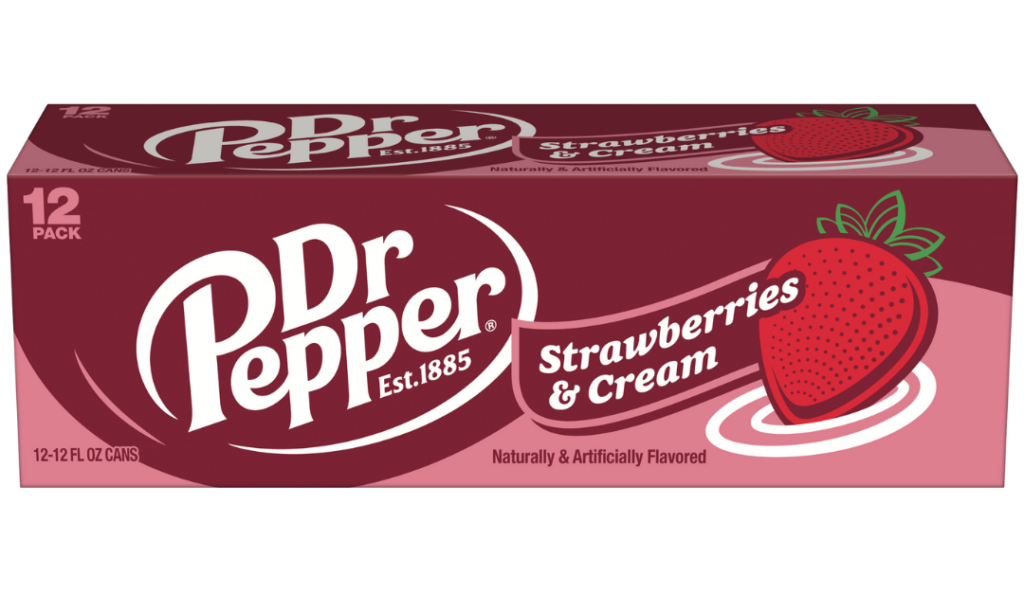
Introducing the newest member of our sweet Dr Pepper family – Dr Pepper Strawberries & Cream. We started with our unique blend of 23 flavors that we’ve been making since 1885. Then, we combined that distinctive Dr Pepper flavor with the delicious sweet flavor of strawberries and the smooth taste of cream that will have your taste buds thanking us. Other sodas can try, but only Dr Pepper Strawberries & Cream can satisfy your craving for a smooth, delicious and unique flavor combination. It’s sure to become a refreshing favorite for dinner, lunch or even breakfast (we won’t judge you). Although you can enjoy the unique flavor all on its own, you can also pair it with food. Dr Pepper Strawberries & Cream is the perfect companion for everything from a full meal like pizza, burgers or rotisserie chicken to a quick snack like pastries, chocolates or your favorite candy. You can’t go wrong with the taste of Dr Pepper Strawberries & Cream when you want to satisfy your sweet cravings. Give your tastebuds something to cheer for with the smooth, satisfying flavor of an ice-cold Dr Pepper Strawberries & Cream and they’ll thank you for it every time!
Dr Pepper Strawberries & Cream Chocolate Pudding Cake
Ingredients:
• 1 1/2 Dr Pepper Strawberries
& Cream 12oz cans
• 1/2 cup & 2/3 cup unsweetened
cocoa powder (separated)
• 1/2 cup & 2 cups Sugar
(separated)
• 1/2 cup packed Brown Sugar
• 1 1/2 cups All-purpose Flour
• 1 1/2 tsp Baking Powder
• 1 1/2 tsp Baking Soda
• 1 tsp Salt
• 2 Eggs
• 1 cup Milk
• 1/2 cup Coconut Oil, melted
• 2 tsp Vanilla
• Whipped cream (optional)
• Strawberries for garnish
Instructions:
• Preheat oven to 350° and line a
9×13 baking dish.
• Heat 1/2 cup cocoa powder, 1/2
cup sugar, 1/2 cup brown sugar, and
Dr Pepper Strawberries & Cream in
a saucepan over medium heat until
creamy.
• Mix the rest of the ingredients and
pour into the baking dish. Add the
pudding mixture from the saucepan
evenly over top.
• Bake for 25-30 minutes, allow to
cool, and serve. Top with whipped
cream and add strawberries for
garnish and enjoy!
Dr Pepper Strawberries & Cream & Coconut
Ingredients:
• 1 12oz can Dr Pepper
Strawberries & Cream
• 1 tbsp of coconut syrup
• 1.5oz vodka
• Whipped cream (if desired)
Instructions:
• Combine coconut syrup,
vodka, and ice in a glass.
• Add Dr Pepper Strawberries
& Cream.
• Top with whipped cream and
enjoy!
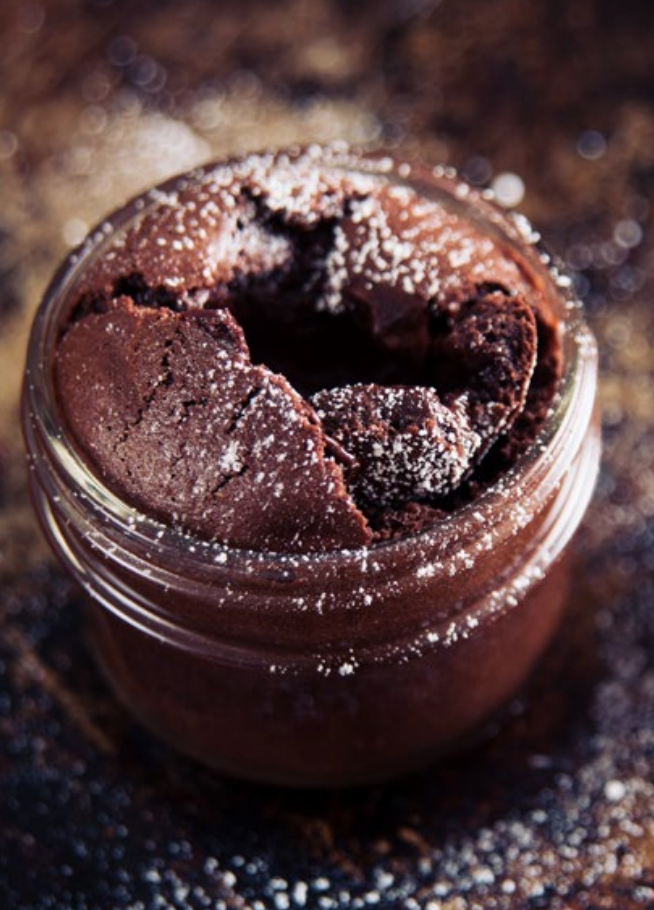

Mia Teal
E-Commerce Marketing
March 24th is National Cocktail Day, which just happens to fall on a Friday this year. How convenient! Price Chopper and Market 32 have a variety of recipes and all the best ingredients you need to celebrate tonight! First, let’s rewind time and see some history of the cocktail.
Cocktails are nothing new. In fact, they have been around since the 18th Century! Originally inspired by British punches, the term “cocktail” was first shown in a 1798 newspaper. It is unknown who created the first cocktail, but one thing is for certain – Cocktails have evolved over time. There are so many different recipes and variations to making a delicious cocktail. The possibilities are endless!
Now for the best part – let’s mix some drinks!
Spring Cocktails: What better way to celebrate the first week of Spring than with this Spring Cocktail! This drink is a delicious mix of berries, bourbon whisky, vodka, & gin!
Pomegranate Cosmo: To say this drink is refreshing would be an understatement. Fresh pomegranate in your cosmo? I think yes!
Poison Apple Sour: Dare to try this Poison Apple Sour? With only a few ingredients and 5 minutes prep time, we think this is a must-try!
Cos-Mocktails: Who says your drink needs to have alcohol? Try this non-alcoholic mocktail for a delicious, refreshing drink!
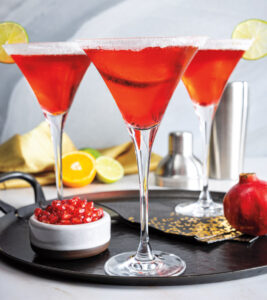
Need some ingredients! Shop below!
Source:
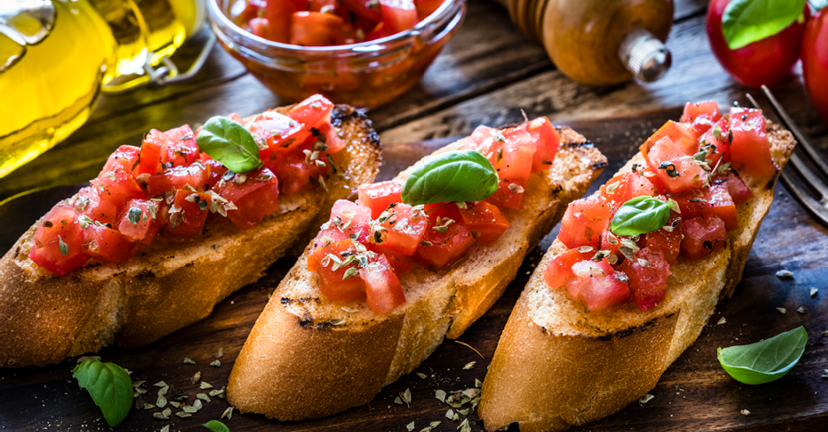
Mia Teal
E-Commerce Marketing
Crunchy French bread dipped in Olive Oil is a pairing like no other. Since National French Bread Day was this week, we wanted to draw attention to this delicious duo, but also highlight the benefits of olive oil. At Price Chopper and Market 32, we have freshly baked French Bread in our bakery that is made daily, a wide variety of olive oil, and so many recipes on our website that use olive oil as a main ingredient. Want to discover what the hype is around olive oil? Keep reading to find out!
Olive Oil Benefits:
Olive oil is considered to be heart-healthy. A 2022 Harvard study illustrates that regular olive oil consumption instead of animal fats could lead to lower cardiovascular disease risk. Additionally, olive oil could potentially help boost bone health and strength, as well as combat inflammation, according to the North American Olive Association. For more information, see the sources at the end of this blog and different studies that have come out around olive oil.
Cooking With Olive Oil:
While there are many different types of olive oils, you may be wondering what the differences are. In our “Cooking with Olive Oil” article, you will learn about four main types of olive oils and how they stand out from each other. This article will help you choose which olive oil to use the next time you cook. Additionally, if you are looking for new recipes that use olive oil, you have come to the right place! Check out these fabulous recipes that you are sure to love!
Orange-Scented Olive Oil Cake: When you think of baking a cake, you would typically use canola oil or vegetable oil. Yes, you can actually use olive oil in some baking recipes like this one! With cinnamon & nutmeg also in the mix, you are sure to have a favorite here.
Italian Easter Pie: With Easter right around the corner, you will certainly want to try this Italian Easter Pie at your holiday gathering. All the freshest ingredients into one savory pie will have your guests thrilled!
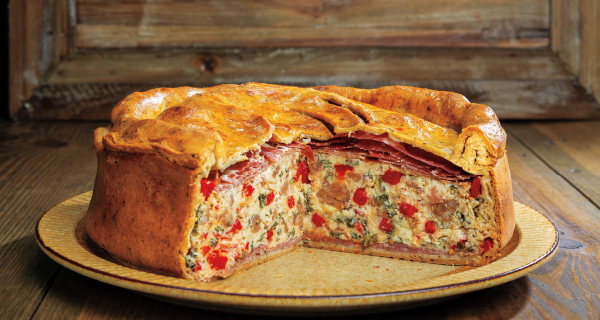
Harvest Salad: Fresh arugula, blue cheese, walnuts, and brussel sprouts make for a fantastic salad. Cooking the brussel sprouts in PICS olive oil is the perfect way to make them!
Honey-Garlic Skillet Chicken: With only six ingredients, this chicken dish is absolutely delicious and simple to make.
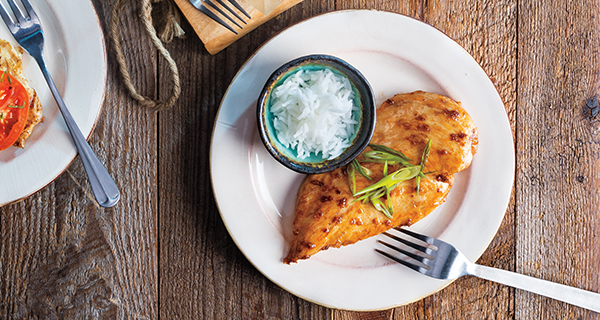
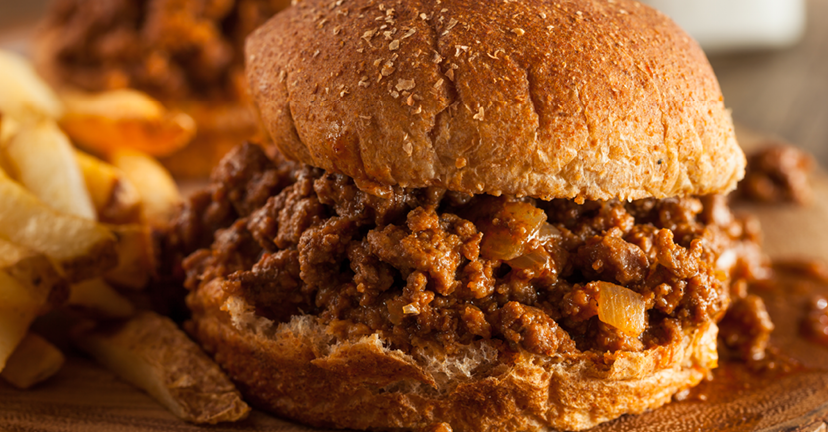
Mia Teal
E-Commerce Marketing
What is a Sloppy Joe, and why was this sandwich given this name? Since today is National Sloppy Joe Day, it is only right that we answer your burning Sloppy Joe questions!
Sloppy Joes are a very popular, messy sandwich! Not only do they taste delicious, but the ingredients are generally inexpensive. Traditionally, the Sloppy Joe is made with ground beef, onions, garlic, bell pepper, Worcestershire sauce, tomato sauce or ketchup, and seasoning on a hamburger bun or roll. What a combo! Of course, there is no right or wrong way to make this sandwich. Some people have substituted beef for chicken, or a plant-based meat.
Now that we know what the sandwich consists of, why in the world is the name Sloppy Joe? Believe it or not, there are different stories on how the Sloppy Joe got its name. The first story takes place in Havana, Cuba. José García was the bar owner, and served ropa vieja to his customers. This is a type of Cuban-style pork. His customers would often joke with García that his restaurant was “sloppy,” hence the name Sloppy Joe’s.
The second tale originated in 1930 from Sioux City, Iowa. The story goes that a cook named Joe who worked in a popular restaurant would make sandwiches by dousing loose-ended meat with tomato sauce. Many believe this is how the name Sloppy Joe was born.
Which story is true? Well, that is up for you to decide. Either way, the Sloppy Joe we know and love is a delicious, warm, and filling meal. Stop by your local Price Chopper and Market 32 for the finest ingredients to make your next Sloppy Joe, or visit our website!

Mia Teal
E-Commerce Marketing Department
Happy Pi Day from Price Chopper and Market 32! Pi Day is a celebration of the irrational number pi (π). This Greek letter is used to represent the ratio of the circumference of any given circle to its diameter. Why is this holiday specifically today? The first 3 numbers of pi are 3.14, hence the date of March 14th. Ironically, today also happens to be Albert Einstein’s birthday!
Pi Day was founded in 1988 by physicist Larry Shaw and has been celebrated ever since. Many math classes will celebrate Pi Day with pie of course, but also with cake, cookies, and more. What a great way to make math fun!
What kind of pie will you buy today? At Price Chopper and Market 32, we have a variety of pies in our bakery section, including apple pie, blueberry pie, pumpkin pie, and more! We also have all the best ingredients if you would like to make your own pie today. Check out some berry-good pie recipes below.
Bumbleberry Pie: What even is a “bumbleberry?” Bumbleberries are not actually a berry, rather, a variety of berries. For this pie we used a mix of strawberries, blueberries, and raspberries, making for a sweet & flavorful pie.
Skillet Pear Pie with Vanilla Ice Cream: Have you ever seen a recipe for pear pie? Well, now you have! Be sure to pear this pie with PICS vanilla ice cream & PICS whipped cream!
Caramel Apple Pie: Like a caramel apple, this caramel apple pie is a dream you will be sure to love!
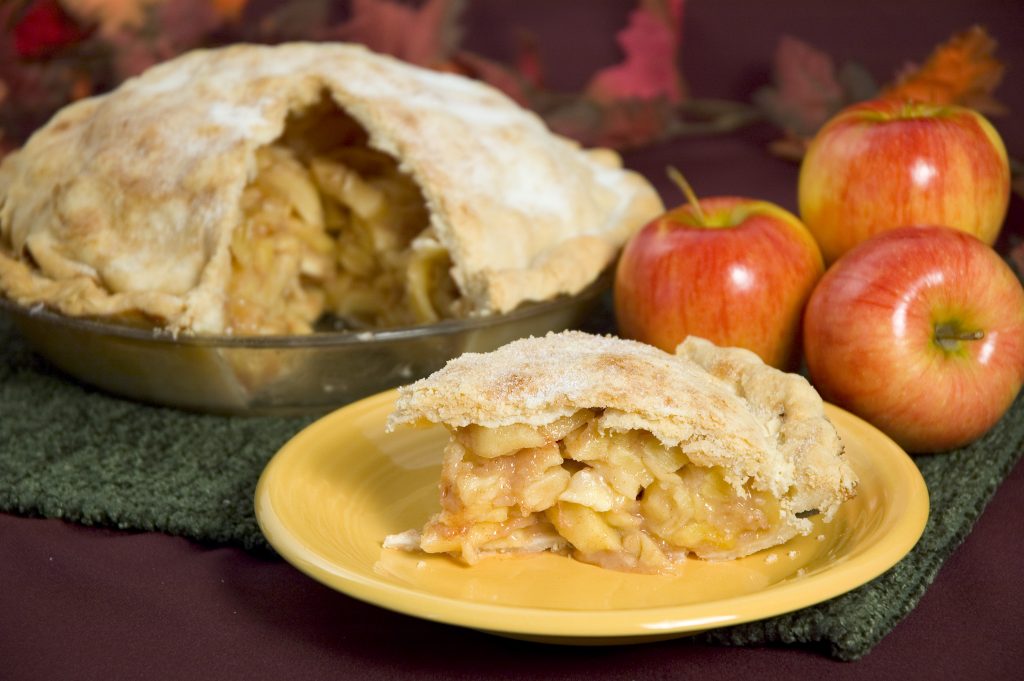

Mia Teal
E-Commerce Marketing
Throughout the entire month of March, we are celebrating and honoring women and their achievements. Today, March 8th, is an entire day dedicated to women, known as International Women’s Day. What exactly does this mean? According to the International Women’s Day Website, today is a “global day celebrating the social, economic, cultural, and political achievements of women.” Throughout history, pioneer women have had to battle and fight for their rights, as well as overcome hardships and discrimination. We honor and thank women for all that they have done, and continue to do.
At Price Chopper and Market 32, we are proud to sell many products from companies that were founded by women. Today, we want to specifically highlight five of these brands that we carry and encourage you to look for them the next time you are in our stores. Check out the five below!.
Earth to Kids (Chickapea)
Shelby Taylor
Shelby Taylor created the brand “Earth to Kids” in 2015. Taylor realized the difficulties of not only putting together a nutritious meal that everyone would like, but also dealing with health restrictions and dietary needs. That is when she decided to take pasta and make it a superfood by creating “Chickapea” pasta. Chickapea pasta is made from chickpeas and lentils. The company’s mission statement is as follows: “We strive to empower consumers to feel better, inspiring and energizing them to do good things in the world.”

Green Grass Foods Inc. (Nutpods)
Madeline Haydon
The story of Nutpods began in 2013 with a woman named Madeline Haydon. While she was on vacation, she was very disappointed by a non-dairy creamer she had in a diner. She knew it was time for a change, so she spent over a year creating what is now known as “Nutpods.” Today, Nutpods has a wide variety of non-dairy creamers, including French Vanilla, Cookie Butter, and Pumpkin Spice just to name a few.
“Being a force for good in society is core to the mission of Nutpods.”

PARTNERS®, A Tasteful Choice Company
Marian Harris
Marian Harris was a small business owner in Seattle. When she soon discovered that places to eat affordable lunches were few and far between, she took matters into her own hands and opened up a restaurant with this exact mission. Harris eventually developed her own homemade cracker recipe to accompany her soups and salads, and these crackers were a huge hit. In 1992, Harris went to local stores to have customers sample these delicious crackers, and that was when PARTNERS®, A Tasteful Choice Company, was born. Why the name Partners? Harris says it is because her crackers are the perfect “partner” with any food.

Elizabeth Stein
Elizabeth Stein learned all about holistic nutrition and the impact that food has on the body 15 years ago. There was one problem, though. Stein saw limited options in grocery stores for delicious, wholesome foods, so Stein knew she had to take action. This was when “Purely Elizabeth” was created. Today, Purely Elizabeth has many different varieties and flavors of granola, cereal, and oatmeal. “Purely Elizabeth products are Certified Gluten-Free with select products also Non-GMO Project Verified, Certified Vegan, and Certified Paleo + Keto by the Paleo Foundation.”

Melissa Kushi
Melissa Kushi learned from a young age the importance of sustainable foods. While studying in Japan, she fully began to understand how important quality salt is for our bodies. Kushi is not only the founder and owner of HimalaSalt, but she is a natural foods cooking teacher, Macrobiotic educator, international organic commodities specialist, and mother. HamalaSalt’s mission statement is as follows: “We are mission driven. Creating a culture of compassion, humanity, and sustainability inspires us, and we take pride in our products that support wellbeing, and provide added social value.”
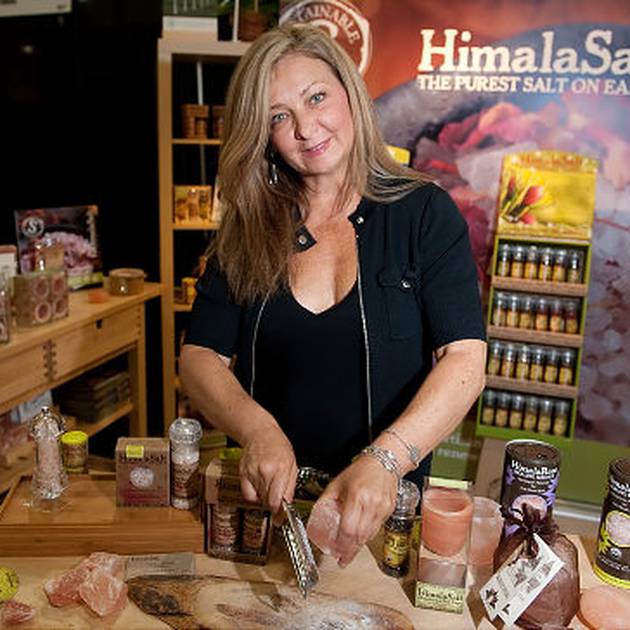
Want to learn more? Be sure to view our International Women’s Day Page!

Ellie Wilson
MS, RDN, CDN
The Academy of Nutrition and Dietetics is the largest organization of nutrition professionals in the world. March is National Nutrition Month®, a now 50-year-old education and awareness campaign highlighting the transformational power of food and nutrition, and March 8th is the annual celebration day for the Registered Dietitian-Nutritionists (RDNs) that make up most of its members. The theme this year is “Fuel for the Future,” which highlights that sustainability and nutrition are always connected.
Over 100,000 registered dietitian-nutritionists (RDNs) in the United States work to bring delicious, nutritious, top-quality science-based information to the table and improve wellbeing in their communities. RDNs work in our hospitals, schools, nursing homes, private practice, primary and specialty health care, public health agencies, hunger organizations, colleges and universities, institutional food service systems, food and water systems policy, college and professional sports programs, health insurance companies, telemedicine, food and nutrition data systems, app development, research, media, culinary medicine and chef training programs, medical and pharmaceutical colleges, grocery stores, non-profits, worksite wellness programs, restaurants, and farming, produce, and food product companies and more – the list is enormous, and their work benefits us all.
The White House Conference on Hunger, Nutrition and Health in September 2022 was focused on nutrition security and policy as key opportunities to support homeland security, improve equity, enhance local food systems, and reduce healthcare costs for chronic illnesses impacted by nutrition. Individuals from all walks of life are looking more closely at the quality of food, reducing food waste, supporting farms by eating local, and assisting those with fewer resources access healthy food. In every setting, RDNs are contributing their passion and commitment to ensuring sound science and practical food strategies are positively impacting the food environment and nutritional health of adults and children across the country.
I am very proud to be part of this profession, and perpetually in awe of the work my peers and colleagues do. Congratulations and thank you to them all on our National Day of Recognition!
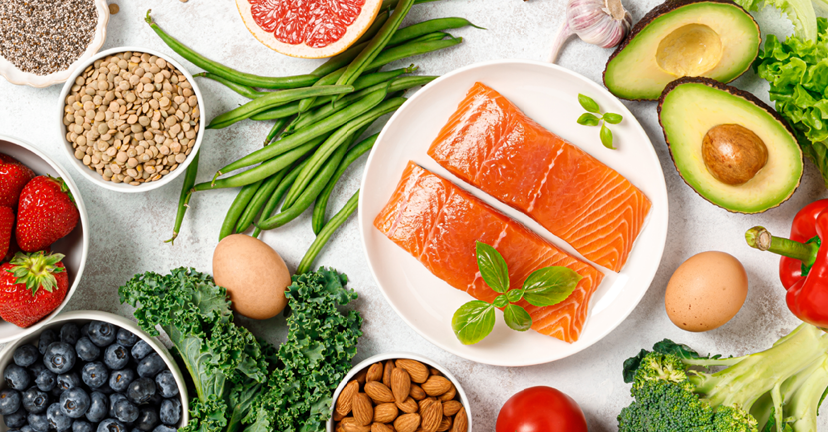
Ellie Wilson
MS, RDN, CDN
Happy National Nutrition Month! This unique annual celebration of the benefits food brings to our lives marks 50 years the Academy of Nutrition and Dietetics has been working to create awareness that better health is built on the transformational power of nutrition. The theme this year, Fuel for the Future, recognizes that food choices and sustainability are always intertwined; fueling the future means eating well at every age and stage, and caring for the earth that provides our food.
How can you make this event meaningful for you and your family? Check out these 10 tips to fuel eating well with the environment in mind, this month, and every month.
-Learn about local foods and eat in season. What is your favorite local fruit or vegetable?
-Recycle packaging and containers as much as possible – everyone can be part of the solution!
-Try new fruits and vegetables, or double up on servings of the ones you enjoy – more is better, for you and for the earth.
-Explore foods through flavors and cultures – we live in a global community and learning about cultures through foods creates connection and communication.
-Eat meals and snacks together – family meals are key to better family communications, stronger social skills, better grades, and healthier eating.
-Plan shopping and meals to reduce waste and save money while staying nourished.
-Include children in planning and making meals and snacks when cooking at home. They can also help clean up! The more food skills children have, the more choices they have as they grow.
-Sip smarter – tap water, flavored or sparkling waters or teas without added sugars, in reusable containers, keep you hydrated and healthy.
-If you want a creative, personalized food and health plan, a registered dietitian-nutritionist is the right professional partner. Find one in your area at https://www.eatright.org/find-a-nutrition-expert.
-Practice gratitude for your body and health by eating a variety of foods – fresh, frozen, and canned are all part of a nourishing plan.
Want to discover new recipes? Check out some of our sites:

Mia Teal
E-Commerce Marketing Department
It is hard to believe that today is already the first day of March! For the entire month, Price Chopper and Market 32 are celebrating National Frozen Food Month. We have a large variety of frozen foods, ranging from frozen produce, to ice cream, to frozen meals. Oh, and we cannot forget to mention that you can earn 20,000 bonus points on a freezer this month while supplies last! Continue reading to find out how.
Why Purchase Frozen Foods?
Purchasing frozen foods is a fantastic way to save money and time. Frozen meals are easy to prepare and are budget-friendly. We have delicious meals that can be cooked in minutes, which is perfect if you are in a time crunch. Additionally, unused frozen foods can simply be returned to the freezer and used for another meal. It is a win-win!
Everyone is Included!
At Price Chopper and Market 32, we want to ensure that there is an option for everyone. We have many vegan and vegetarian frozen meal options, as well as dairy-free ice cream and pizza, frozen gluten free bread, and much more. Head over to your local Price Chopper or Market 32 and discover our incredible variety of frozen food.
How Can I Earn 20,000 Rewards Points?
Yes, you read that right. You can earn 20,000 Rewards Points which equals $200 when you purchase an RCA Chest Freezer. Here is the best part; the Chest Freezer costs $200, so you will be earning that $200 back in the form of Points! How cool is that! For more information, please visit our Frozen Food Frenzy.
Want to explore some frozen drinks & bowls? Check out a few cool recipes below!
Caramel Milkshake: A four-ingredient delicious caramel milkshake is a must! Be sure to grab PICS whipped cream to complete this shake.
Hawaiian Smoothie Bowl: A tropical smoothie bowl that could be eaten as a meal, snack, or dessert! Feel free to add any other frozen fruits or toppings in this delicious bowl.
Kicked-Up Green Smoothie: A mix of frozen fruits & vegetables. This drink will help energize you throughout your day!
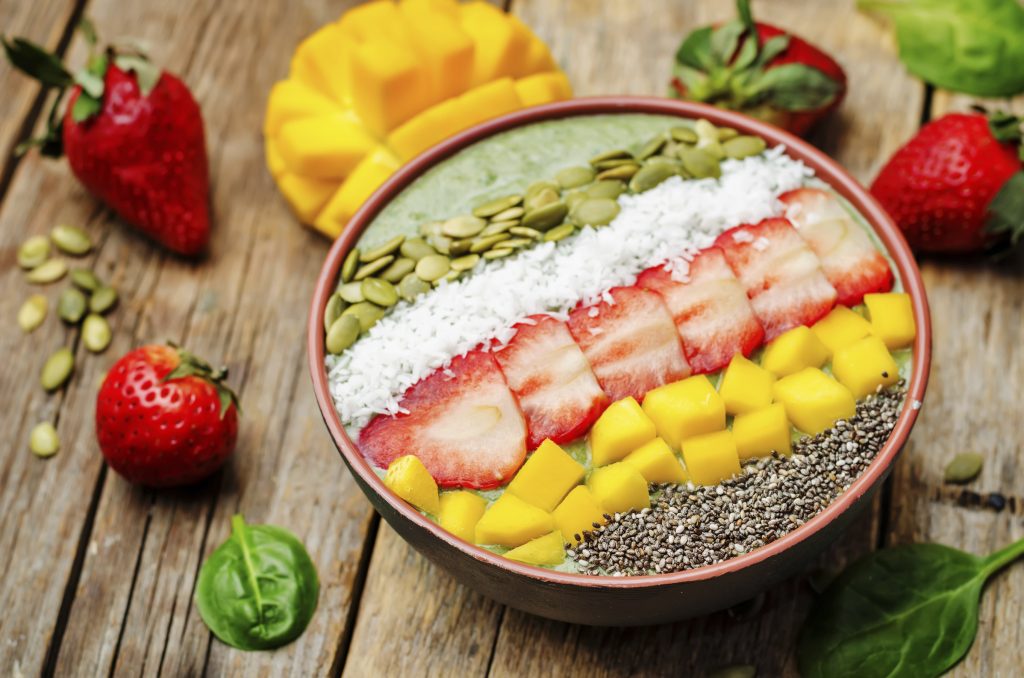
Happy National Frozen Food Month!

